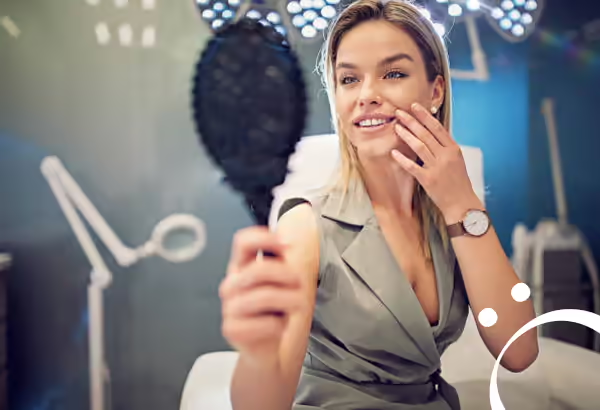Rhinoplasty: Achieve a More Aesthetic and Functional Nose
Rhinoplasty is designed to enhance both the natural appearance of the nose and functional breathing capacity. With Prof. Dr. Özay Özkaya, discover the possibilities of aesthetic and functional nose surgery to achieve a harmonious and well-balanced facial profile.
Rhinoplasty: Enhancing Both Aesthetics and Functionality
Rhinoplasty is a surgical procedure designed to improve both the aesthetic appearance and functional structure of the nose. Aesthetic rhinoplasty aims to reshape the nose in harmony with the patient's facial structure, skin type, and overall facial proportions, ensuring a natural and balanced look. In addition to aesthetic improvements, the surgery can also address functional issues, such as breathing difficulties, to enhance overall nasal function.
What Is Aesthetic Rhinoplasty?
Rhinoplasty is a surgical procedure that modifies the shape, size, or angle of the nose. Various techniques can be applied to achieve the desired outcome, such as:
✅ Smoothing the nasal bridge to reduce a dorsal hump,
✅ Refining the nasal tip for a more delicate and defined appearance,
✅ Adjusting the projection to achieve better facial harmony.
The goal of aesthetic rhinoplasty is to create a nose that is proportionate and naturally complements the face, ensuring a harmonious and well-balanced look.

What Is Functional Rhinoplasty?
In some cases, aesthetic rhinoplasty is performed alongside functional nasal surgery to correct breathing difficulties. These issues often arise due to:
- Deviated septum (septal deviation): When the nasal septum is misaligned, causing airflow obstruction.
- Enlarged nasal turbinates (inferior turbinate hypertrophy): Swollen nasal tissues that restrict breathing.
Functional rhinoplasty is integrated with aesthetic correction to ensure that the patient achieves both an improved appearance and enhanced nasal function, leading to better breathing and overall comfort.
Who Is a Good Candidate for Rhinoplasty?
Rhinoplasty is suitable for individuals seeking both aesthetic and functional improvements. Common reasons for undergoing surgery include:
✅ Disproportionate nose size that does not complement facial features.
✅ Crooked or asymmetric nasal structure.
✅ Drooping, wide, or overly prominent nasal tip.
✅ Breathing difficulties due to structural abnormalities.
Most patients are considered eligible for surgery after the age of 18, once facial growth is fully developed.
Rhinoplasty Process
1. Consultation & Planning
Before the surgery, a detailed analysis of your nasal structure is performed. Both aesthetic goals and functional concerns are evaluated, and a customised surgical plan is created.
2. Surgical Procedure
- Rhinoplasty is typically performed under general anaesthesia and lasts 2 to 4 hours.
- The surgical approach may involve open or closed rhinoplasty, depending on the complexity of the case.
3. Recovery Process
- Swelling and mild bruising around the nose are common but usually subside within a week.
- The final nasal shape gradually refines over the next few months, achieving a natural appearance.
Post-Rhinoplasty Care: Key Considerations
🔹 Protect your nose from accidental impacts and avoid excessive facial movements.
🔹 Refrain from heavy exercise and strenuous activities for the first few weeks.
🔹 Follow your surgeon’s instructions regarding nasal splints and bandaging.
🔹 Maintain proper hygiene around the nasal area to prevent infections.
By following these guidelines, patients can ensure a smooth recovery and achieve optimal, long-lasting results from their rhinoplasty procedure.

